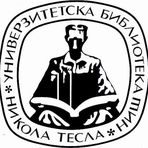Title
Ekonomska analiza naknade nematerijalne štete u parničnom postupku
Creator
Petrović Danijela 1973-
Copyright date
2019
Object Links
Select license
Autorstvo-Nekomercijalno-Bez prerade 3.0 Srbija (CC BY-NC-ND 3.0)
License description
Dozvoljavate samo preuzimanje i distribuciju dela, ako/dok se pravilno naznačava ime autora, bez ikakvih promena dela i bez prava komercijalnog korišćenja dela. Ova licenca je najstroža CC licenca. Osnovni opis Licence: http://creativecommons.org/licenses/by-nc-nd/3.0/rs/deed.sr_LATN. Sadržaj ugovora u celini: http://creativecommons.org/licenses/by-nc-nd/3.0/rs/legalcode.sr-Latn
Language
Serbian
Cobiss-ID
Theses Type
Doktorska disertacija
description
Datum odbrane: 24.02.2020.
Other responsibilities
mentor
Mojašević, Aleksandar 1977-
član komisije
Nikolić, Ljubica 1965-
član komisije
Radulović, Branko 1972-
Academic Expertise
Društveno-humanističke nauke
University
Univerzitet u Nišu
Faculty
Pravni fakultet
Group
Katedra za pravno-ekonomske nauke
Alternative title
Economic analysis of non-pecuniary damage compensation in the civil proceeding
Publisher
[D. Z. Petrović]
Format
[12], 327 listova
description
Biografija autora: list 323;
Bibliografija: listovi 299-322.
description
economic analysis of law
Abstract (en)
In this paper work has been researched the compensation of the nonpecuniary
damage from economic angle, respectively economic
implications of non-pecuniary damage to the well-being of individuals
and the well-being of the society as a whole. The aim of the paper is to
point out the significant resources that absorb the area of non-pecuniary
damages in civil proceedings and to indicate the possibility of their
reduction by applying the principle of efficiency.
Researching of indicated problem requires an analysis from an
economic, as well as from a legal aspect. In order of better and complete
understanding the compensation of non-pecuniary damage, the
economic angle of observation, which includes economic instruments
and the use of economic concepts and methodology, will dominate in
this paper.
Studying the economic implications of the non-pecuniary damage
compensation procedure involves use of legal methods, but also use of
the concept of economic analysis of law first of all, the microeconomic
aspect of the Chicago School of Economic Analysis of Law. The fact
that the litigation procedure absorbs a significant amount of resources,
which would be used in other areas in order to increase social
prosperity, indicates the necessity of increasing the efficiency of the
procedure, as well as defining the legal rules that create stimulus to the
perpetrators of the damage as well as to the injured party in accordance
their behavior with the standard of due attention. The theoretical
analysis points to the importance of preventive action, in a number of
areas where a person's rights are breached so that the number of injured
parties can be reduced, which would result in a reduction in the number
of proceedings in which compensation would be claimed.
The paper also analyzes the reasons for the frequency of the challenging
the first instance verdicts and submitting the appeals for second instance
decisions.Based on analysis of court verdicts of Appellate courts in
Serbia in the field of non-pecuniary damage, we determine whether
legal reasons related to violation of material law, wrongly established
factual situation or the provisions of the civil proceedings or the reason
for appealing a verdict of the first instance decision is the dissatisfaction
of the parties in litigation with the amount which have been decided by
the verdict. There is a significant difference between the highly
established amounts in the claims and the compensation of the damage
made. Is it possible to reduce the number of appeals against the
judgements based on more realistic claims for compensation and what is
the role of lawyers in introducing the questions that need to be
answered.
The specificity of non-pecuniary damage due to the subjective feeling of
fear, pain and other violations of subjective rights that is inherent to an
individual, as well as the absence of clearly defined criteria for
measuring mental pain, makes it difficult to determine an adequate
compensation that can compensate or mitigate the condition of the
injured in which they are brought without their consent and that were
caused by the violation of rights. These and other related issues will be
subject to specific elaboration.
Authors Key words
nematerijalna šteta, parnični postupak, troškovi, efikasnost,
odgovornost za štetu, pobijanje presuda, žalba
Authors Key words
non-pecuniary damage, costs of civil proceeding, efficiency, liability for
damage, impugned verdicts, appeal
Classification
33:[347.426.4:347.9](043.3)
Subject
331.109.64:34.04](043.3)
Type
Tekst
Abstract (en)
In this paper work has been researched the compensation of the nonpecuniary
damage from economic angle, respectively economic
implications of non-pecuniary damage to the well-being of individuals
and the well-being of the society as a whole. The aim of the paper is to
point out the significant resources that absorb the area of non-pecuniary
damages in civil proceedings and to indicate the possibility of their
reduction by applying the principle of efficiency.
Researching of indicated problem requires an analysis from an
economic, as well as from a legal aspect. In order of better and complete
understanding the compensation of non-pecuniary damage, the
economic angle of observation, which includes economic instruments
and the use of economic concepts and methodology, will dominate in
this paper.
Studying the economic implications of the non-pecuniary damage
compensation procedure involves use of legal methods, but also use of
the concept of economic analysis of law first of all, the microeconomic
aspect of the Chicago School of Economic Analysis of Law. The fact
that the litigation procedure absorbs a significant amount of resources,
which would be used in other areas in order to increase social
prosperity, indicates the necessity of increasing the efficiency of the
procedure, as well as defining the legal rules that create stimulus to the
perpetrators of the damage as well as to the injured party in accordance
their behavior with the standard of due attention. The theoretical
analysis points to the importance of preventive action, in a number of
areas where a person's rights are breached so that the number of injured
parties can be reduced, which would result in a reduction in the number
of proceedings in which compensation would be claimed.
The paper also analyzes the reasons for the frequency of the challenging
the first instance verdicts and submitting the appeals for second instance
decisions.Based on analysis of court verdicts of Appellate courts in
Serbia in the field of non-pecuniary damage, we determine whether
legal reasons related to violation of material law, wrongly established
factual situation or the provisions of the civil proceedings or the reason
for appealing a verdict of the first instance decision is the dissatisfaction
of the parties in litigation with the amount which have been decided by
the verdict. There is a significant difference between the highly
established amounts in the claims and the compensation of the damage
made. Is it possible to reduce the number of appeals against the
judgements based on more realistic claims for compensation and what is
the role of lawyers in introducing the questions that need to be
answered.
The specificity of non-pecuniary damage due to the subjective feeling of
fear, pain and other violations of subjective rights that is inherent to an
individual, as well as the absence of clearly defined criteria for
measuring mental pain, makes it difficult to determine an adequate
compensation that can compensate or mitigate the condition of the
injured in which they are brought without their consent and that were
caused by the violation of rights. These and other related issues will be
subject to specific elaboration.
“Data exchange” service offers individual users metadata transfer in several different formats. Citation formats are offered for transfers in texts as for the transfer into internet pages. Citation formats include permanent links that guarantee access to cited sources. For use are commonly structured metadata schemes : Dublin Core xml and ETUB-MS xml, local adaptation of international ETD-MS scheme intended for use in academic documents.


